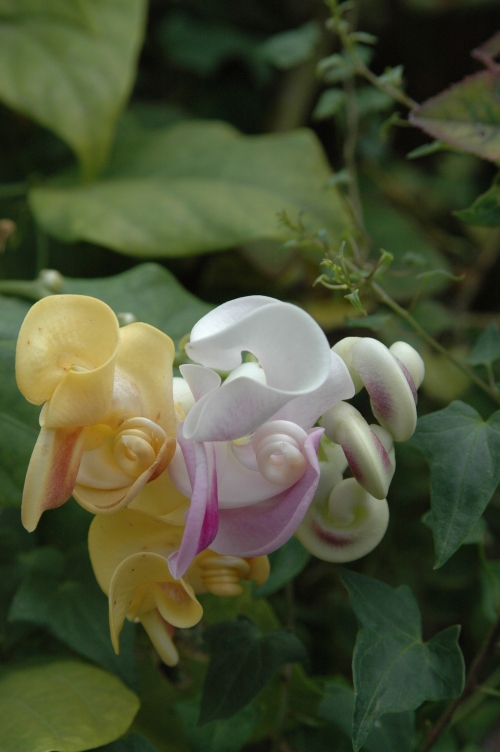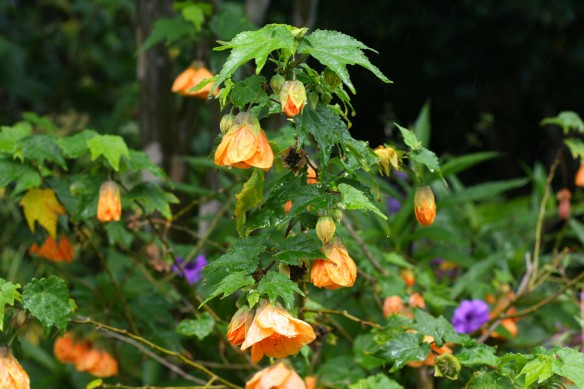
Lyn McCallum is the secretary of the Constantia Valley Garden Club. She has grown and loved Abutilons in her Bergvliet garden for many years. Her shrubs are remarkable for their variety, beauty and health.
Lyn’s propagated stock from her Abutilon collection will be offered at the OGC plant sale, along with many other unusual and sometimes hard-to-find plants.
Read on to learn how to care for these exotic and indigenous flowering shrubs.
Lyn writes:
“These shrubs, also known as Chinese lanterns, can grow into small trees, are long lived, and make wonderful garden subjects. I have had an Abutilon pictum in my garden for over 40 years! It has survived a devastating cut-back by an over-enthusiastic gardener, stood up to severe winter gales and constant buffeting by summer southeasters, and nutritional competition from a mulberry tree and several hydrangeas.
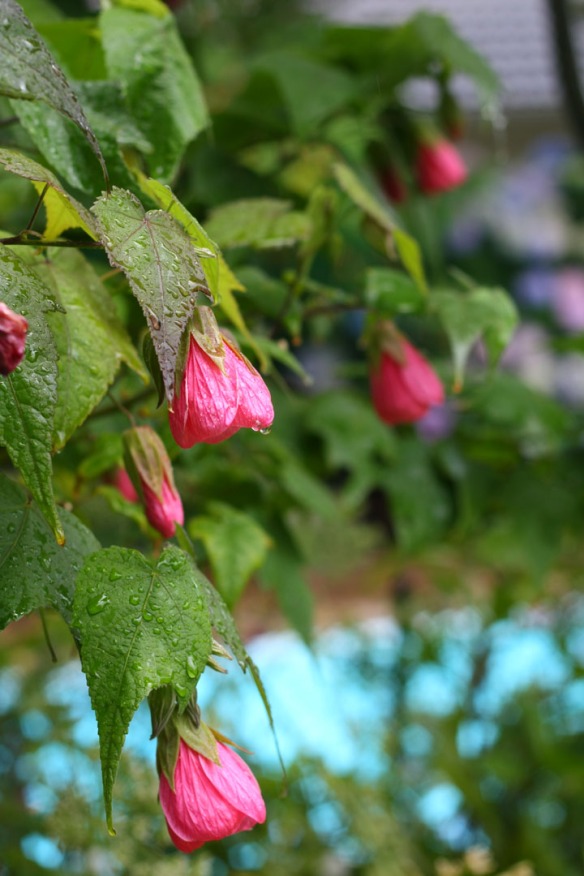
“Abutilons flower in our warm peninsula climate almost all the year round, giving colour to the garden throughout the year. They need compost-enriched soil and require a fair amount of water, but their generous flowering makes all this worthwhile. The shrubs should be pruned regularly, if you can bear to do this to a plant still bearing flowers! This helps to keep its growth neat and compact. They grow and flower best in dappled shade or morning sun, and also make good container subjects.
“I feed my Abutilons twice a year – in spring with Neutrog Rapid Raiser or Talborne Organic 3:1:5 and in autumn with Neutrog Bounce Back and ensure that there is a layer of mulch around the root area at all times.
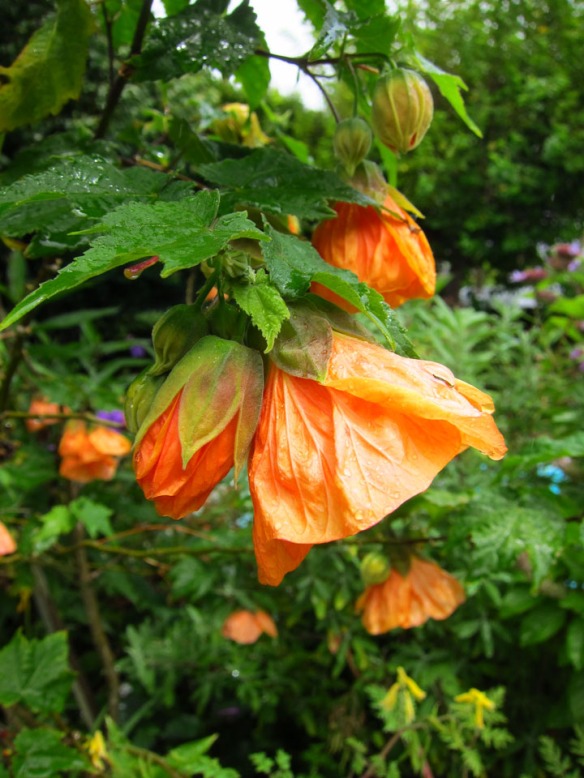
“Abutilons have a lax, willowy growth habit and drooping lantern-like flowers which come in white, as well as shades of red, orange, pink and yellow. The leaves are palmate with mainly three lobes and some are attractively variegated.
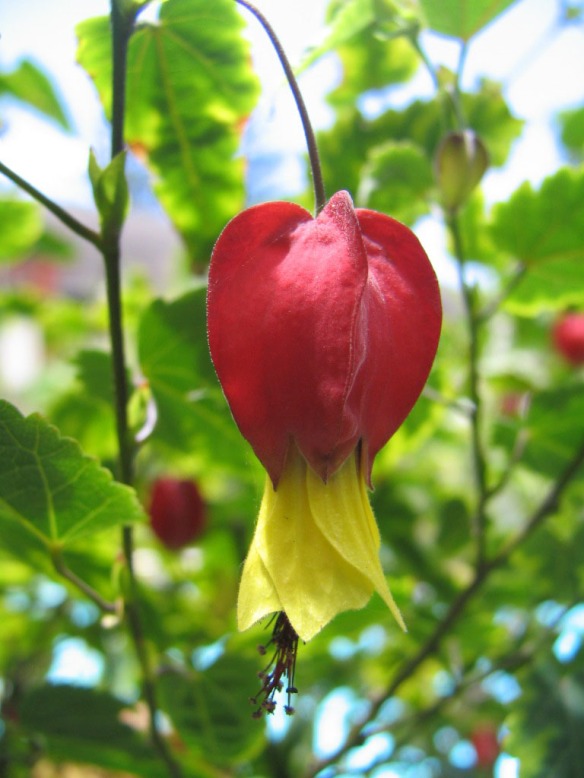
“There are many hybrids available – I usually buy from Jenny Ferreira at Klein Optenhorst in Wellington. She also has one of the species Abutilons, Abutilon megapotanicum (above), as well as a very attractive cultivar Abutilon ‘Kentish Belle’; both are small, scrambling shrubs that love to twine themselves amongst other plants.
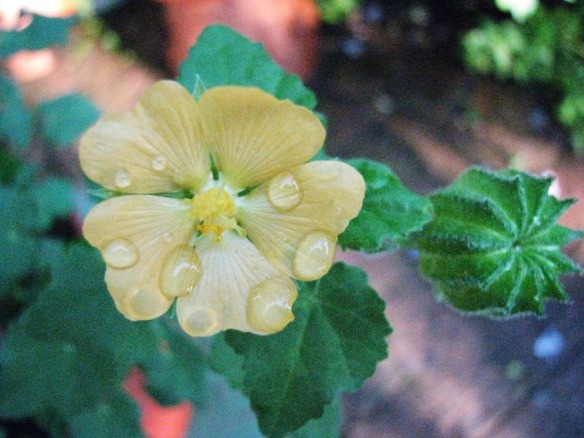
“Recently, to my delight, I discovered an indigenous Abutilon – Abutilon sonneratianum (above) at the Kirstenbosch nursery. Occurring naturally in most provinces of South Africa, including the Western Cape, this perennial sub-shrub has butter yellow flowers most of the year, opening in the afternoons. It also has unusual and ornamental seed pods. It prefers to grow in semi shade and in my garden it has sown itself fairly freely, unlike the exotic Abutilons.
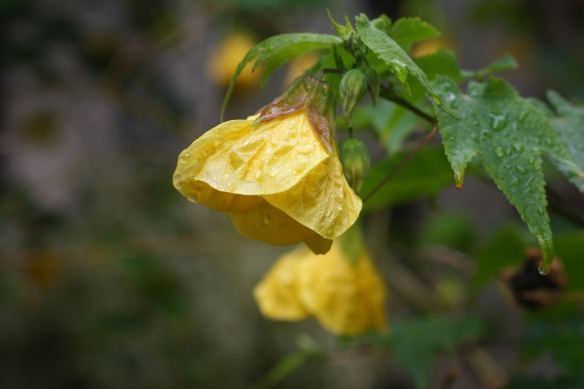
“Abutilons are fairly successful plants from which to take slips. Spring is the best time. I try to choose slim, semi-hardwood twigs or thin branches, preferable without flowers or buds and cut the stem just below a node, to about 10cm. Trim off excess leaves and put into sandy soil and water well. Keep in the shade and don’t let the slips dry out completely. It is quite a long slow process, with slips that do take, being ready for potting on after about 6 months.
“Unfortunately, Abutilons do not enjoy being cut and put into a vase – they droop after about 12 hours, some even earlier than that, but the plants make up for this disadvantage by the way they flower constantly in the garden.”
Text: Lyn McCallum. Photos: Deryck McCallum, Lyn McCallum, Marie Viljoen
 Just some of the interesting and beautiful exotic and indigenous plants – all in excellent condition – at our Open Gardens Constantia plant sale, on Friday and Saturday.
Just some of the interesting and beautiful exotic and indigenous plants – all in excellent condition – at our Open Gardens Constantia plant sale, on Friday and Saturday.






